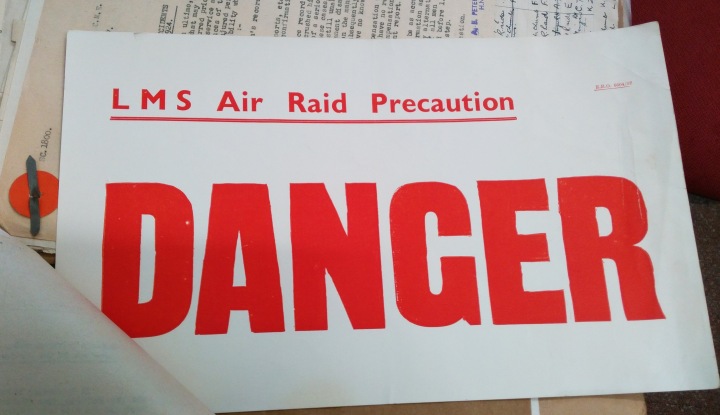The item I’ve chosen this month is a collection of forms, correspondence, and reports, regarding the compensation given to staff who had been injured at work. It’s from the Wolverton Railway Works collection housed at Milton Keynes Museum; a collection with which I’ve become quite familiar.
This item is grouped into various collections of papers from the 1930s and 1940s related to, for instance, industrial dermatitis and prostheses. But I was interested in this item not for its contents, but for its cannibalisation of other records. Groups of papers have been clipped together, and, seemingly to increase stability, some sturdy pieces of card are used as backing material. But these pieces of card have their own stories.

Looking through records about skin conditions, and then suddenly finding an air raid sign reminded me of how unpredictable people (and archives) can be. It reminds me of how book binders would reuse Medieval manuscript fragments (see Eric Kwakkel’s excellent posts on this topic). Once the parchment is deemed no longer useful, it is recycled for its sturdiness inside the bindings of other books. While those manuscript fragments have acquired the status of treasure for us, hundreds of years ago, they were nothing more than scraps. WWO/120 contains rather more mundane examples. But it’s remarkable to think that if these hadn’t been repurposed, they might not have been kept at all. It brought home to me how things can be found in the most unexpected places. If you want to know about plywood, look in the medical records, obviously.
